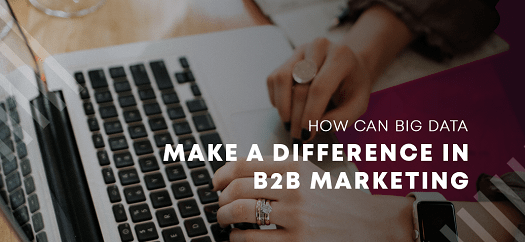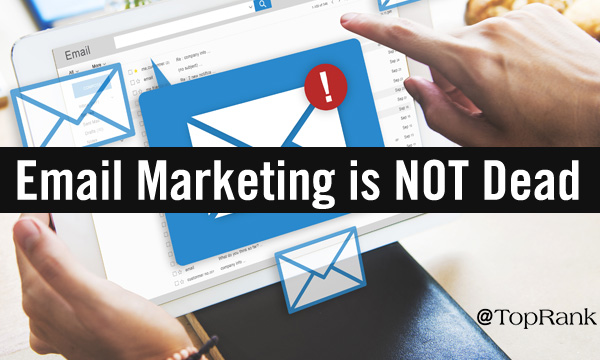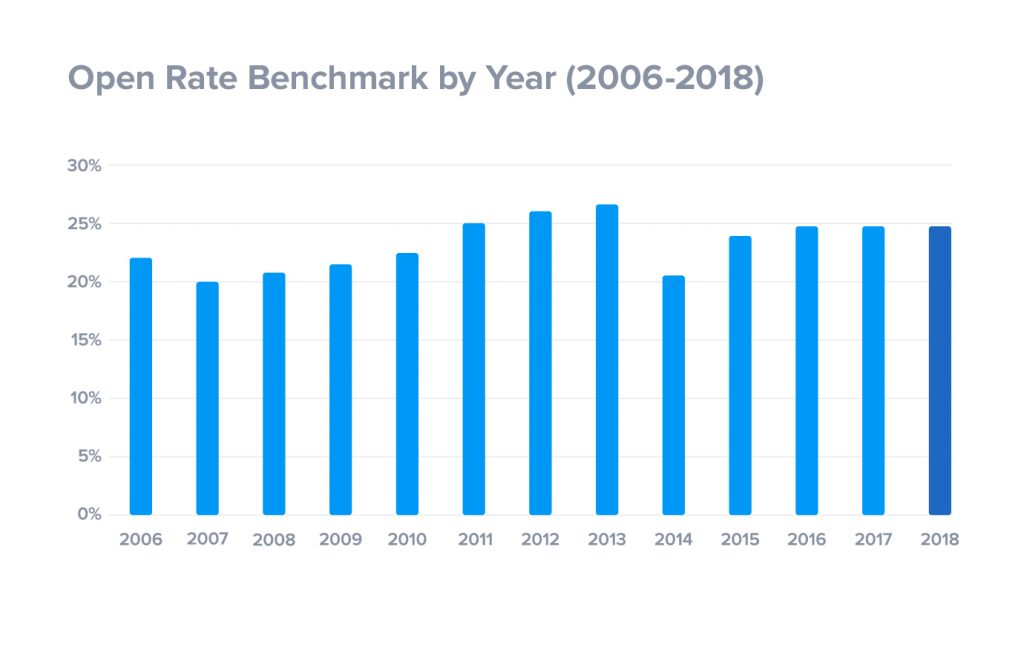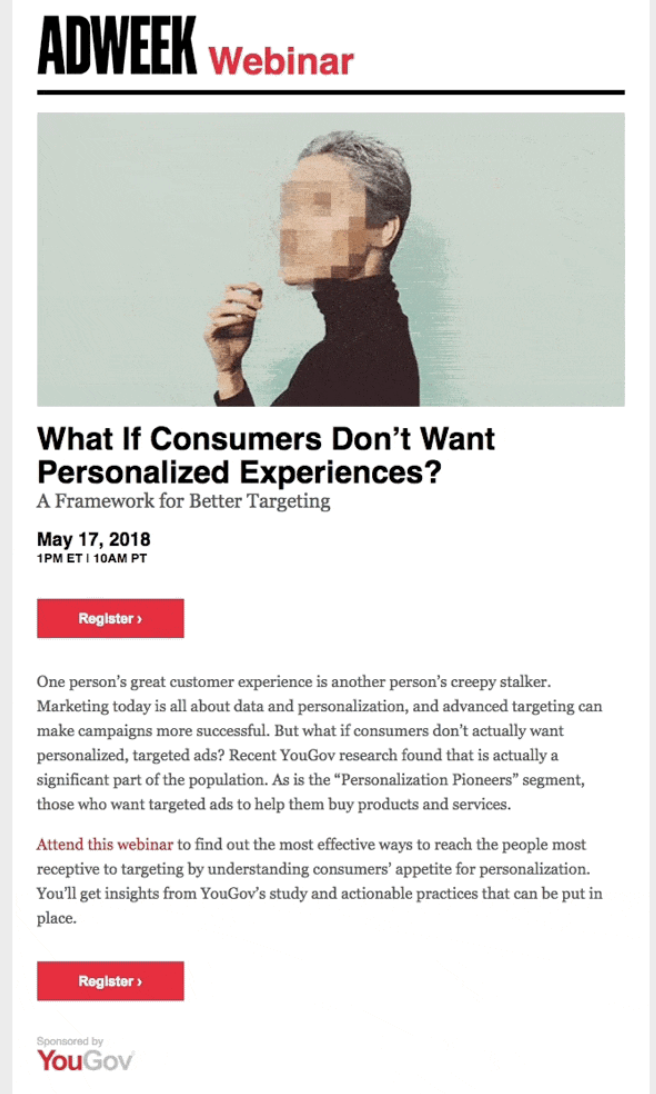By Lane Ellis.
What will successful B2B marketing look like in a post-pandemic world, and what can marketers do today to be ready?
B2B marketers are facing daunting and unprecedented challenges — not unlike a Rubik’s Cube — during the global health crisis. Each impediment, however, also offers valuable lessons that can help us as we transition to 2021 and the future opportunities that await.
Let’s begin unraveling the mysteries of the post-pandemic marketing world, with six dynamic tactics B2B marketers can use today to prepare for the future business landscape.
1 — Influencer Intensification: Subject Matter Experts
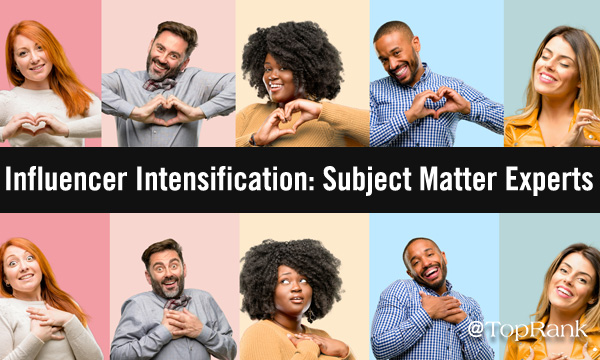
Post-pandemic marketing will likely feature a noticeable intensification when it comes to the use of B2B influencers. As one of the most pandemic-proof marketing practices during the global health crisis, B2B influencer marketing is poised to continue growing in 2021 and beyond, due in part to the value industry experts bring to everyone involved.
“Traditional marketing channels are drying up and even trade shows are imperiled in 2021,” Mark Schaefer, chief operating officer at B Squared Media observed. “The influence marketing trend will be amplified as businesses seek trusted voices to join industry conversations,” Mark added.
Mark’s prediction is among dozens of insightful influencer marketing statistics in our recent 2020 State of B2B Influencer Marketing Research Report, and the following data points speak to the strength of industry influencers and point to increased use as we move into 2021:
- 90% of B2B marketers expect their influencer marketing budget to increase or stay the same
- 78% of B2B marketers believe prospects rely on advice from influencers
- 74% of B2B marketers say that influencer marketing improves customer and prospect experiences with a brand, and 90% plan to increase their budget in the near future
- 63% agree that marketing would have better results if it included an influencer marketing program
“Digging into the results, one can quickly see a trend in B2B marketers who are optimistic about influencer marketing yet not confident about their ability to execute,” Shama Hyder, chief executive at Zen Media recently observed in her Forbes interview with our co-founder and chief executive Lee Odden, “New Report Says B2B Influencer Marketing Still Has Massive Room For Growth.”
“With the pandemic causing a loss of in-person B2B tactics — field marketing, in-person trade shows, and experiential marketing efforts, for example — much of where buyers focus for information are digital channels,” Lee noted.
“This is exactly where influencers provide valuable and trusted perspectives. Trust, reach and engagement are always challenges for B2B brands, and collaborating with trusted industry experts that have the attention and respect of buyer audiences has proven to be an effective solution,” Lee added — a sentiment also expressed by Sarita Rao, senior vice president of marketing at AT&T Business*.
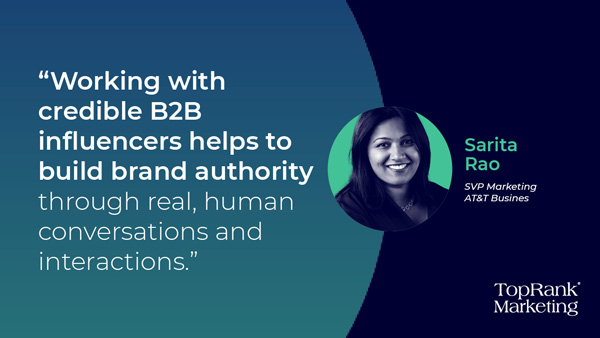
According to research conducted by Forrester the pandemic has seen new opportunities for influencer marketing, as 63 percent of U.S. consumers have spent more time using social media platforms, 58 percent have noticed more content from influencers, and 51 percent have had a positive attitude about influencer content and found it valuable.
Additionally, between March and July 2020 sponsored influencer posts saw a five-fold increase in interactions, reaching 57 million in July, according to report data from Shareablee.
Among U.S. and U.K. consumers who follow social media influencers, 72 percent said they have spent more time using social platforms during the pandemic, and 64 percent also said that they are likely to continue the same level of usage during post-pandemic times, according to GlobalWebIndex survey data.
Aside from its resilience during the pandemic, influencer marketing has for some time been poised to see more mainstream B2B usage, a move that is likely to steadily increase in our post-pandemic marketing world.
To learn more about B2B influencer marketing or beginning a pilot program, here are six additional recent resources we’ve compiled:
2 — Persistent Programs: Always-On Marketing
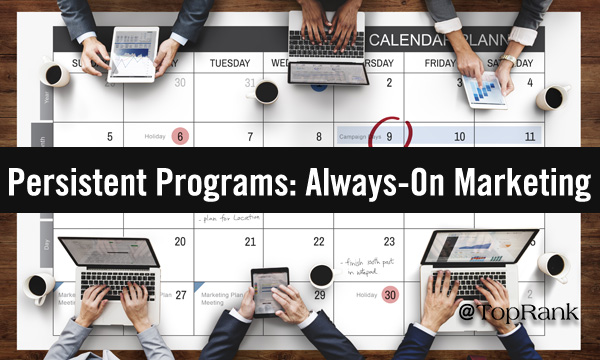
Studies have shown the increased effectiveness of always-on marketing programs that replace one-and-done single-use campaigns with ongoing efforts that match the always-on nature of today’s consumer.
The case for a post-pandemic shift to always-on marketing programs is bolstered by compelling recent data from our report, such as:
- 76% of B2B marketers find that the strategy of working with influencers through always-on engagement or when combined with campaigns delivers results
- 75% saw increased views of brand content using always-on influencer marketing
- 60% saw an increased share of voice, 55% saw more media brand mentions, and 50% saw increased brand advocacy through always-on influencer marketing
- 89% of B2B marketers using always-on influencer programs expect their budgets to increase or remain the same, versus 73% for marketers running traditional campaign-based programs
This all points to persistent B2B marketing programs becoming more widespread among successful B2B marketers in the post-pandemic era, and it’s easy to see why, as the partnerships formed through always-on programs build ongoing brand credibility and trust that can be difficult or impossible to achieve using one-and-done campaigns.
If you’re looking to learn more about why always-on programs achieve better results and how you can implement them, check out the following recent articles we’ve written about a topic that will only become more important in 2021 and beyond:
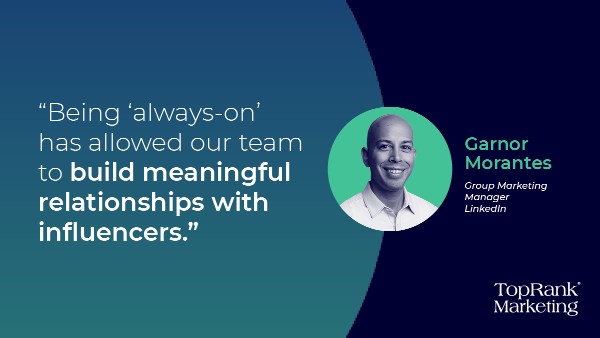
3 — Shifting Search: New Challenges & Opportunities
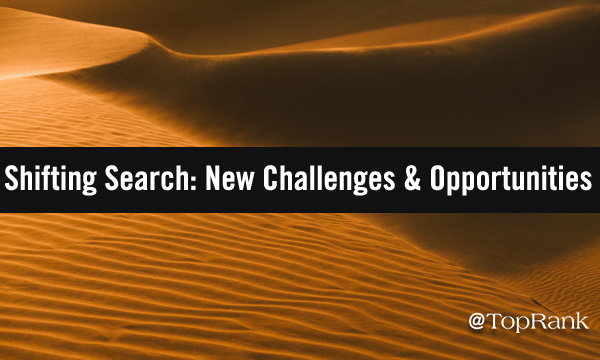
Like blowing dunes, the sands of the search technology landscape change often, and in the post-pandemic environment marketers will see a shift as Apple seeks to make inroads with its own search experience and whittle away at Google’s long-standing dominance.
Paid and organic search marketing efforts are a vital part of most B2B firms’ strategy, and pandemic or not these efforts would have continued for the majority of businesses. The global health crisis has given us a newfound appreciation of the importance of findability and how valuable a sound search plan is for businesses today, and this will continue into the foreseeable future.
Search strategies no longer involve only a website and traditional search engines, as more people than ever also search for answers and information from within social media platforms’ own often-lackluster search mechanisms, which some see as presenting new challenges, as well through the increasing use of voice search.
66 percent of B2B chief marketing officers said that their 2021 budgets would see an increase in spending on search engine optimization (SEO), with the same percentage also planning to boost spending on paid search, according to Gartner’s annual CMO spending survey.

Recently I took an in-depth look at why search is more important than ever, in “SEO Strategy: 5 Reasons Why It’s More Important Than Ever For B2B Marketers,” and we’ve also explored other aspects of SEO in B2B marketing in these articles:
4 — Virtual Variations: Social VR Landscapes

This year the world has spent more time using both traditional social media platforms and social virtual reality worlds, and when our lives return to some semblance of normal, all flavors of VR will seek to capitalize on an audience that — although no longer captive at home — has come to know and expect that brands use the technology.
51 percent of U.S. adults have increased their use of social media during the global health crisis according to eMarketer, and nearly a third have spent an additional one to two hours of time on social platforms during the pandemic, leaving more time for audiences to explore the new virtual worlds being created by social firms, such as Facebook’s Horizon VR experience.
“The convergence of both the physical and virtual worlds will create new opportunities in the future in the way friends, families, and even colleagues connect,” Cathy Hackl, author and futurist recently noted in Forbes.
By 2022 some forecasts predict over 95 million augmented reality (AR) users in the U.S. alone, including over 60 percent using VR with more than 30 percent using VR headsets, a trend that savvy B2B marketers are keeping a close eye on for post-pandemic marketing spending.
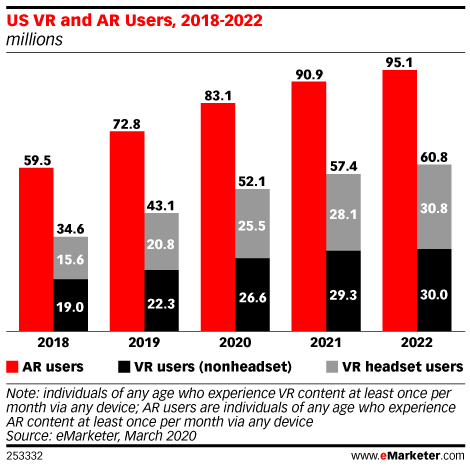
Other survey data has shown that 39 percent of B2B professionals expect to install new AR and VR technology in the next 12 months.
With in-game, AR, and VR marketing opportunities seeing greater interest in 2021 and beyond, B2B marketers can learn more about the importance of experiential storytelling in the following pieces we’ve written about these and related subjects:
5 — Evolving Marketing Events: In-Person & Virtual
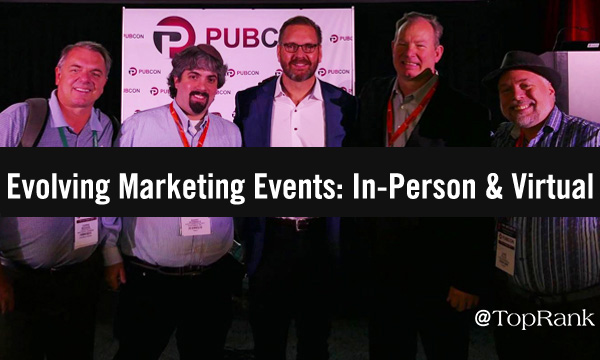
How will marketing events change in a post-COVID19 world?
There’s no question that in-person marketing events are win-win experiences for the many parties involved, from speakers and attendees to exhibitors, sponsors, and others, yet during the pandemic creative new takes on virtual conferences have presented viable alternatives that are likely to be with us for good, continuing to augment in-person events once the health crisis ends.
The pandemic has seen Facebook begin offering paid event options for businesses, with direct in-stream purchases available for eligible Facebook business pages in 20 countries including the U.S., offering digital marketers new monetization and event marketing options.
Virtual events help traditional in-person conferences expand their reach and gain new online audiences — people who may eventually also attend an organization’s physical events.
Similarly, in-person events such as marketing conferences may — in post-pandemic times — serve as good examples for some of the purely virtual events that have come into existence this year out of necessity, pushing them to begin their own new physical events.
92 percent of marketers have said that they believe putting on successful virtual events will be important until the pandemic ends, and some brands have already chosen to postpone or cancel their events all the way through the middle of 2021, including major players Facebook and Microsoft.
73 percent of B2B event organizers have had to cancel a physical event because of the pandemic, and 81 percent have provided virtual alternatives, according to survey data from The Center for Exhibition Industry Research (CEIR).
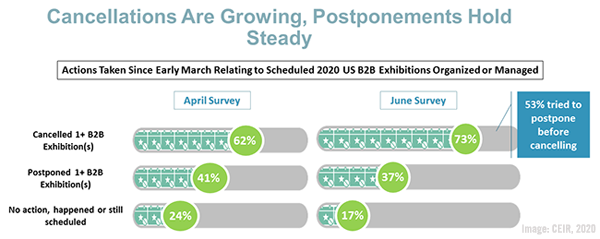
The time is bound to arrive when in-person events return, however, and smart B2B marketers will be prepared to incorporate both virtual and physical conference experiences for learning, networking, and selling.
Having an influencer marketing strategy makes sense for taking full advantage of both virtual and in-person events.
“Partnering with influencers is more important now than it ever has been,” our president and co-founder Susan Misukanis explained. “Targeting the right influencer communities can be the best way to expand virtual event attendance and reach into a broader audience — who may not have planned to travel to your live event or conference,” Susan added.
To level-up your event game for both virtual and physical conferences, here are six articles we’ve published to help:
6 — Delivery Diversity: New Communication Channels

The pandemic has both driven us apart and brought us together in new ways, and given us creative methods to both tell and hear compelling digital stories.
New communication channels have arisen, such as the virtual worlds of Facebook’s Horizon and others we’ve already explored, along with the huge rise in online video communication through Zoom, Slack, Google Meet, Microsoft Teams and others.
The mass turn to video conferencing has also helped drive a large increase in both mobile app usage and advertising spending, highlighting the importance of making mobile a part of any well-rounded B2B marketing strategy.
Engagement among mobile ads has climbed by some 15 percent during the global health crisis according to survey data, and despite an overall drop in ad spending for the year, mobile ad spend has fared the best, as its 15 percent decrease was less than the 25 percent seen for desktop ad buying, according to additional data.
Business app opens saw a 26 percent year-over-year increase from March through June, report data shows, as seen here.
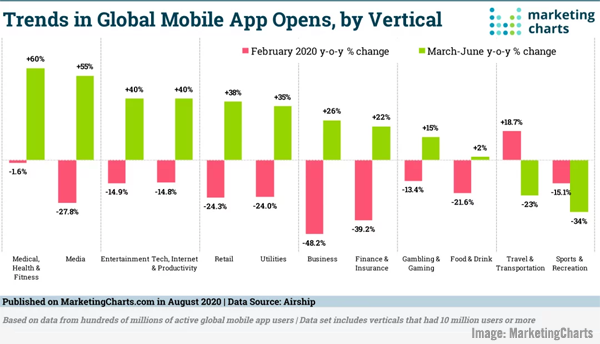
A rare pandemic silver lining is how we’ve all found new ways to communicate and — more importantly — the stories we’re telling. Storytelling will be key in the post-pandemic marketing landscape, and to help you weave authentic messages that audiences will remember here are six recent articles we have available on this important topic:
Don’t Forget Your B2B Marketing Gravity
via GIPHY
The post-pandemic world will see intensified use of B2B influencer marketing, the growth of always-on programs, shifts in the world of search, more social VR, the evolution of events, and new communication channels, and we hope that by exploring these areas here your future marketing efforts will achieve newfound success — even if you’re no closer to solving that Rubik’s Cube.
Succeeding in any of these areas takes considerable time, effort and experience, which is why many firms choose a top marketing agency like TopRank Marketing.
Contact us and find out why firms including Adobe, LinkedIn, AT&T, 3M, Dell, Oracle, monday.com and many others have chosen us for award-winning marketing.
By Lane Ellis.
Lane R. Ellis (@lanerellis), TopRank Marketing Social Media and Content Marketing Manager, has over 36 years’ experience working with and writing about the Internet. Lane spent more than a decade as Lead Editor for prestigious conference firm Pubcon. When he’s not writing, Lane enjoys distance running (11 marathons including two ultras so far), genealogical research, cross-country skate skiing, vegetarian cooking, and spending time with his wonderful wife Julie Ahasay and their three cats in beautiful Duluth, Minnesota.




















